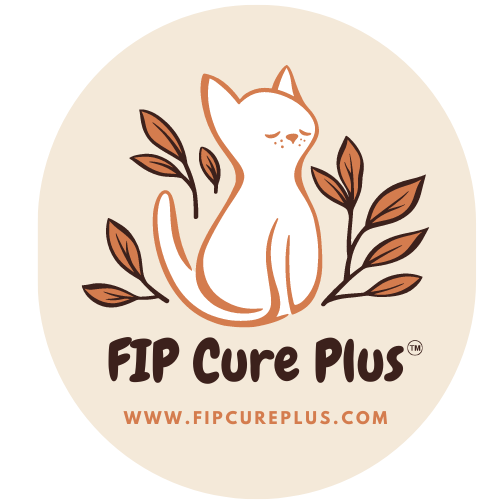Neurological FIP and Injections: Why Higher Doses Matter
Share
When a cat is diagnosed with neurological FIP (Feline Infectious Peritonitis), it presents a unique challenge in treatment. Unlike wet or dry FIP, which primarily affect the abdomen or organs, neurological FIP impacts the central nervous system, leading to symptoms like seizures, coordination issues, behavioral changes, and even paralysis. Given the severity of this condition, proper treatment is crucial to the cat’s recovery. GS-441524 injections have proven to be an effective treatment for FIP, but when it comes to neurological FIP, higher doses of this medication are often necessary for success.
At www.fipcureplus.com, we understand the complexities of treating neurological FIP and how critical it is to administer the right dose of GS-441524. In this post, we’ll explore why higher doses are often required for neurological FIP and how they contribute to a better chance of recovery.
Why Does Neurological FIP Require Higher Doses?
1. Blood-Brain Barrier and Medication Absorption
The blood-brain barrier (BBB) is a natural protective barrier that prevents certain substances, including medications, from easily passing into the brain and spinal cord. This is particularly challenging when treating neurological FIP, as the virus targets the central nervous system. To effectively reach the brain and spinal cord, higher doses of GS-441524 are often necessary to overcome the BBB and ensure the drug reaches the affected areas.
Higher doses increase the likelihood that sufficient amounts of the medication will penetrate the BBB and target the virus in the central nervous system, helping to manage the progression of the disease.
2. Neurological FIP Requires More Aggressive Treatment
Neurological FIP is more aggressive than other forms of the disease. The symptoms can rapidly worsen, leading to severe neurological deficits. As a result, a higher dose of GS-441524 is often required to combat the virus more effectively. These higher doses can help prevent further neurological damage, reduce the severity of symptoms, and give your cat a better chance of recovery.
Treatment for neurological FIP requires more frequent or higher doses of the drug to ensure that the infection is controlled before permanent damage to the nervous system occurs.
3. Improved Efficacy with Higher Doses
Studies and real-world experiences from cat owners and veterinarians alike have shown that higher doses of GS-441524 are often more effective in treating neurological FIP. These higher doses help ensure that the virus is eradicated more thoroughly, reducing the risk of relapse or incomplete recovery. Cats with neurological FIP are more likely to experience a full recovery when given the appropriate dose of medication.
For cats suffering from neurological symptoms such as seizures, loss of motor function, or behavioral changes, a higher dose is often required to manage the disease’s progression and improve the quality of life.
How to Administer Higher Doses Safely
When administering higher doses of GS-441524, it’s essential to follow the prescribed dosage and schedule provided by your veterinarian. Overdosing or incorrect administration can lead to adverse effects. Here’s how to ensure safe and effective administration:
1. Consult with Your Veterinarian
Always consult your veterinarian before adjusting the dosage of GS-441524. They can provide guidance on how much to administer based on your cat’s specific condition, weight, and response to treatment. Veterinarians are also critical in monitoring your cat’s progress and adjusting the dosage as needed to ensure optimal results.
2. Monitor for Side Effects
While higher doses can improve the chances of recovery, it’s also important to monitor for any signs of side effects, such as swelling at the injection site, mild lethargy, or gastrointestinal discomfort. These are usually temporary and can be managed with appropriate care, but it’s always good to keep your veterinarian informed of any changes.
3. Administer Consistently
Consistency is key when it comes to administering injections. Skipping doses or varying the timing can reduce the efficacy of the treatment. It’s essential to follow the prescribed injection schedule and monitor your cat’s response to ensure the treatment remains effective.
What to Expect When Treating Neurological FIP
Treating neurological FIP with higher doses of GS-441524 injections is a process that requires patience, commitment, and careful monitoring. The recovery process may take several weeks, and your cat may show initial signs of improvement after the first few days or weeks of treatment. However, neurological symptoms may take longer to resolve, and recovery can be gradual.
Some common signs of improvement include:
-
Decreased frequency of seizures
-
Improved coordination and movement
-
Increased appetite and energy levels
-
Restored behavior and activity
Each cat’s recovery journey is different, and some cats may experience setbacks or relapses during the treatment process. It’s important to remain committed to the treatment plan and continue administering the prescribed dose as directed by your veterinarian.
Final Thoughts
When treating neurological FIP, higher doses of GS-441524 can make all the difference in your cat’s recovery. Overcoming the blood-brain barrier and delivering the medication effectively to the central nervous system is key to managing this aggressive form of FIP. With careful management, support from your veterinarian, and the right treatment, there is hope for your cat to beat neurological FIP and return to a healthy, happy life.
If you have any concerns or questions about the dosage or administration of GS-441524, don’t hesitate to reach out to us at www.fipcureplus.com. We’re here to provide you with the guidance and support you need during this critical time.
